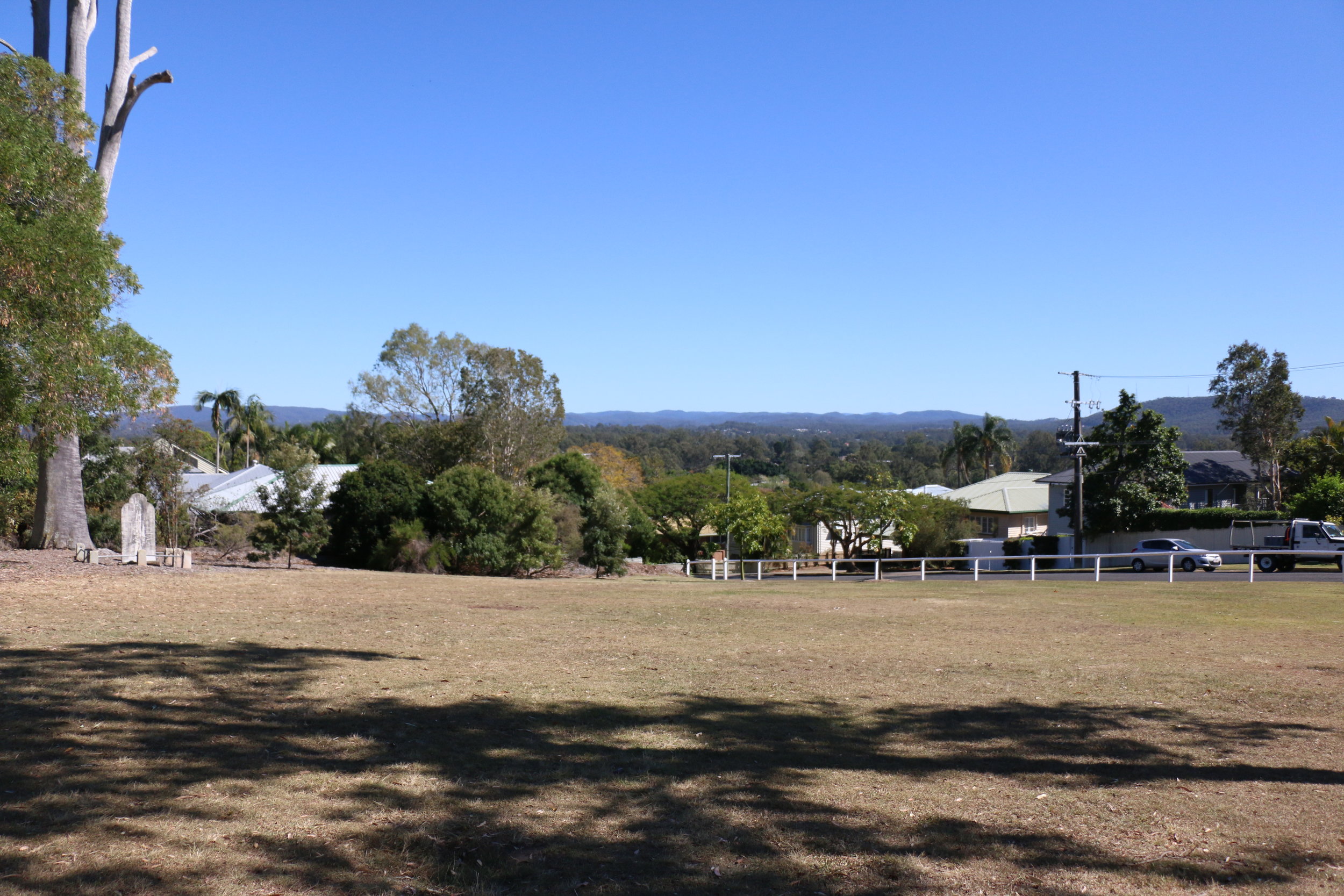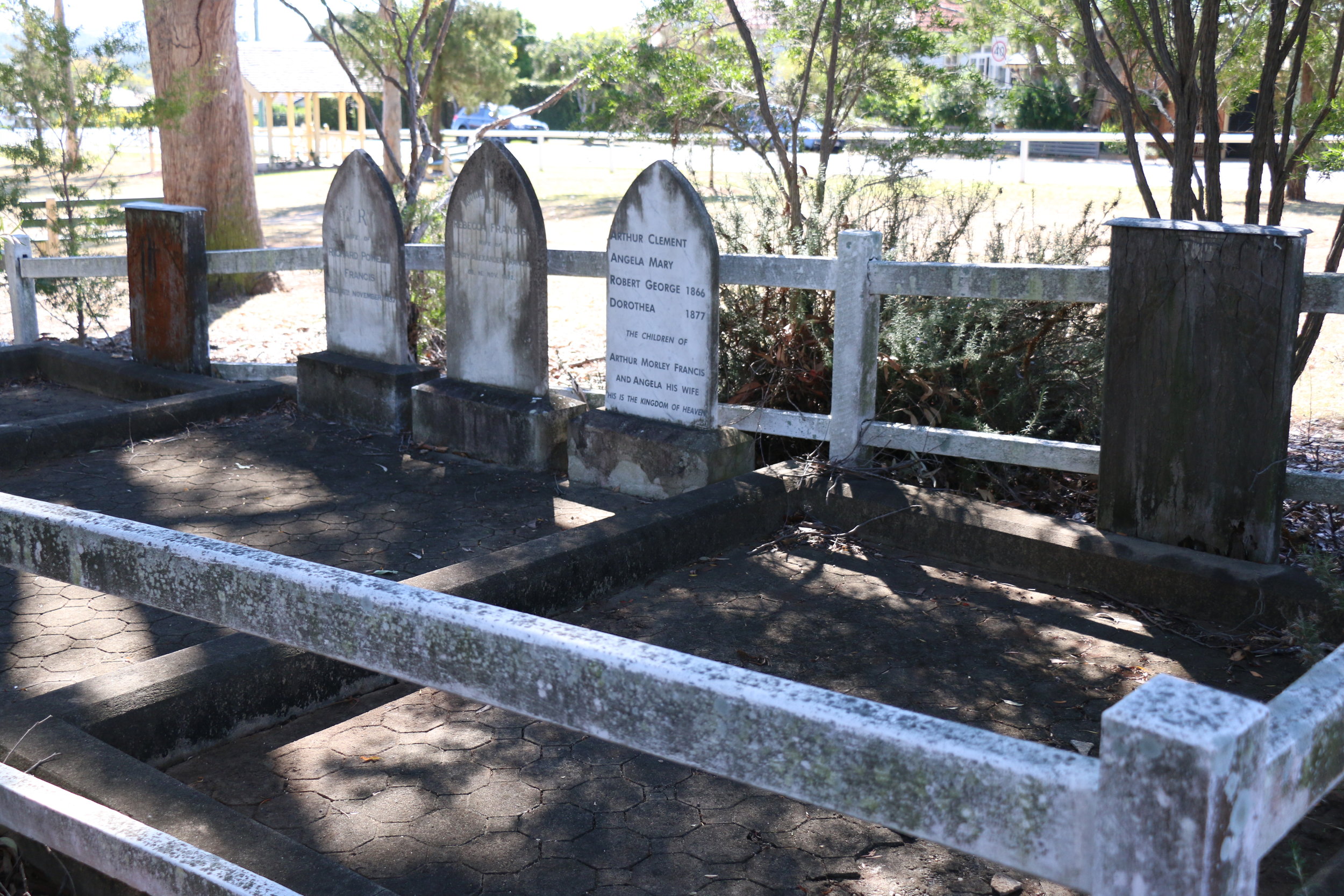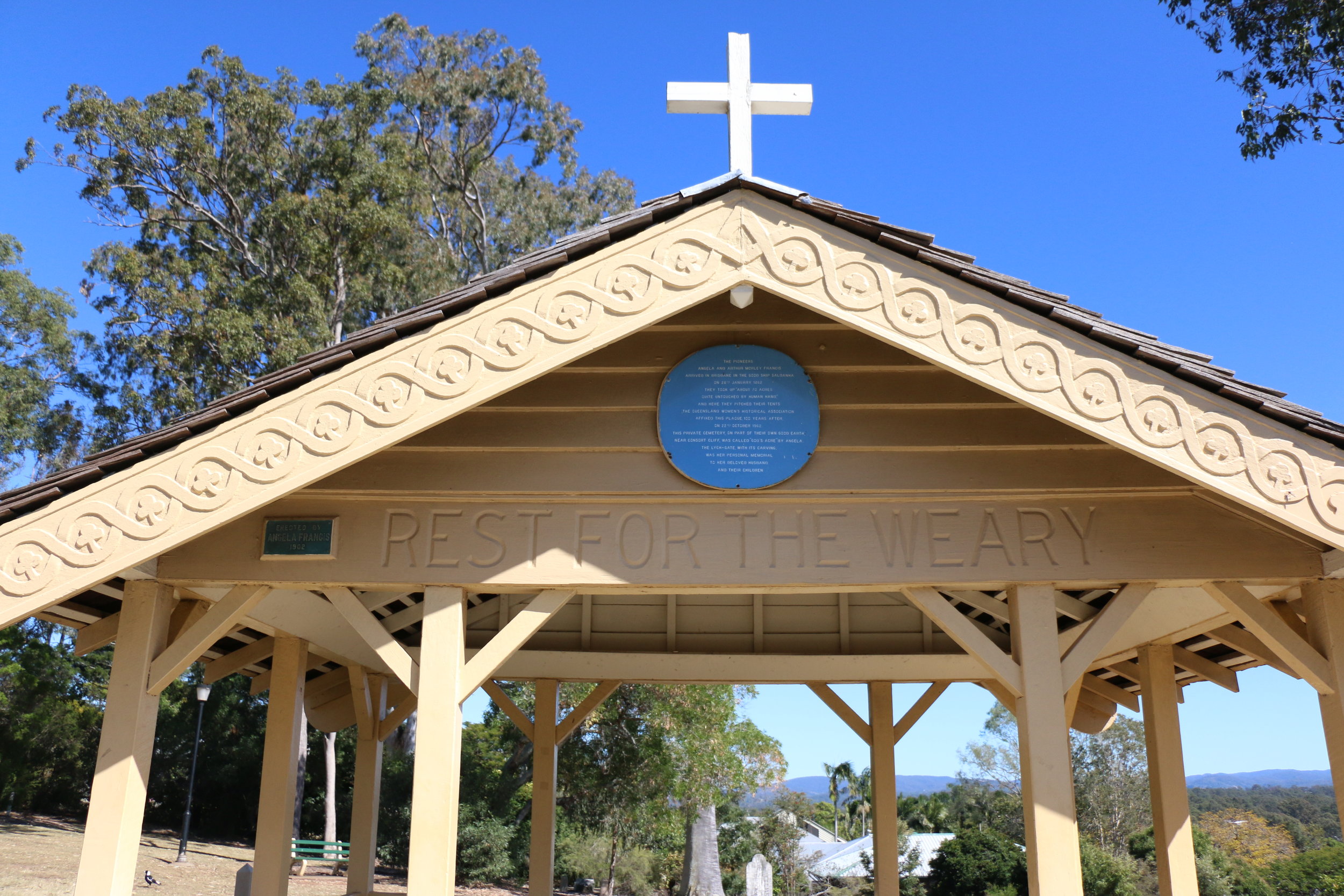If you’re a local to the 4075 area, there’s a good chance that you’ve visited the Francis Look-Out. From there, you can see from the city to past Mt Coot-tha with almost uninterrupted views.
But have you ever stopped to consider why it’s called the Francis Look-Out, who all of the graves belong to or who the Francis’ were?
We spoke to Marion Mackenzie from the Oxley-Chelmer History Group about the history behind this recognisable spot and one very unlucky family.
 The view from Francis Look-Out (Image: Supplied)
The view from Francis Look-Out (Image: Supplied)
History
“The Francis family arrived here in the 1860s with a number of other people who settled in this district to become farmers,” Marion explains.
The Francis Look-Out area was the place where they owned farmland and their tents were further down what is now Hilda Street towards the river.
“A lot of them weren’t really experienced farmers but they undertook the task with great enthusiasm.”
“Along the way though, a number of tragedies beset them,” Marion explains, and says that the 1863 flood saw them lose all their belongings in their tents, prompting an escape to higher ground.
 The graves of the Francis family (Image: Supplied)
The graves of the Francis family (Image: Supplied)
The Francis Family
Arthur and Angela were the original Francis', and arrived by ship from England with a toddler and an infant who was born on the voyage.
“Unfortunately, that baby died the next year and this was to mark the rest of their life because Angela gave birth to seven children. Only three survived into adulthood [due to high infant mortality rates],” Marion says.
Richard was the eldest son, and went to England to study as a teacher before returning to Australia to teach at Brisbane Boys Grammar.
“He had just married and had his first child when the 1893 flood came through and he went in to rescue people,” Marion says.
“As a result, he developed pneumonia and died and his grave is here as well.”
The second son, Alexander, became a doctor after studying in England and married before returning.
“But then his wife died of tuberculosis and her grave, or certainly a stone in memory of her, is here as well,” Marion says.
Angela had also returned to England to do a midwifery course when Alexander was there, as she had lost so many babies and wanted to help other women.
“She came back here and set up classes in private homes in first aid and prenatal care in country towns throughout the state and badgered the government to set up training courses in midwifery in the hospital in Brisbane.”
 "Rest for the Weary" was hand-carved by Angela (Image: Supplied)
"Rest for the Weary" was hand-carved by Angela (Image: Supplied)
Arthur and Angela had then left this district and moved around the state wherever Arthur was a magistrate.
“They eventually moved back to Sherwood and became very active in the women’s suffrage movement and held meetings for women.”
“In 1902, Arthur died in his 70s and he is also buried here.”
That same year, Angela had the structure built at the front of the lookout and hand-carved the words “Rest for the Weary” in remembrance.
After Arthur passed, Charlotte (their surviving daughter), Alexander and Angela returned to England to live.
The Cemetery
There are a number of graves in the Francis Look-Out park, and the majority belong to the Francis family.
These graves are fenced and belong to the members of the family who are buried side by side, including the infants.
“It’s not surprising that they established this cemetery on such a high point where the graves would be safe."
The rest of the graves in the area are said to belong to close friends of the Francis family.
“They left behind this extraordinary place and the graves tell those sad stories.”
---
A huge thank you to Marion from the Oxley-Chelmer History Group.
If you’d like to know more about our area, feel free to get in touch at ochginc@gmail.com.
